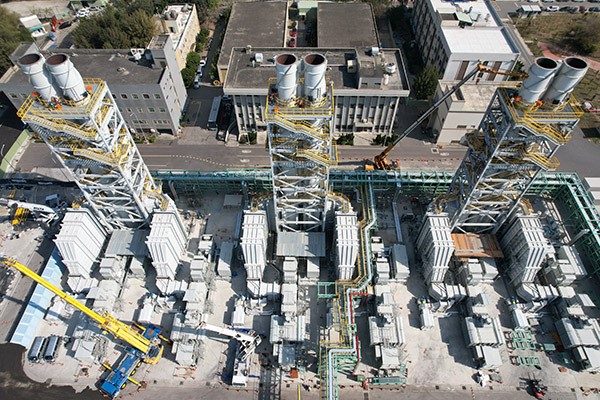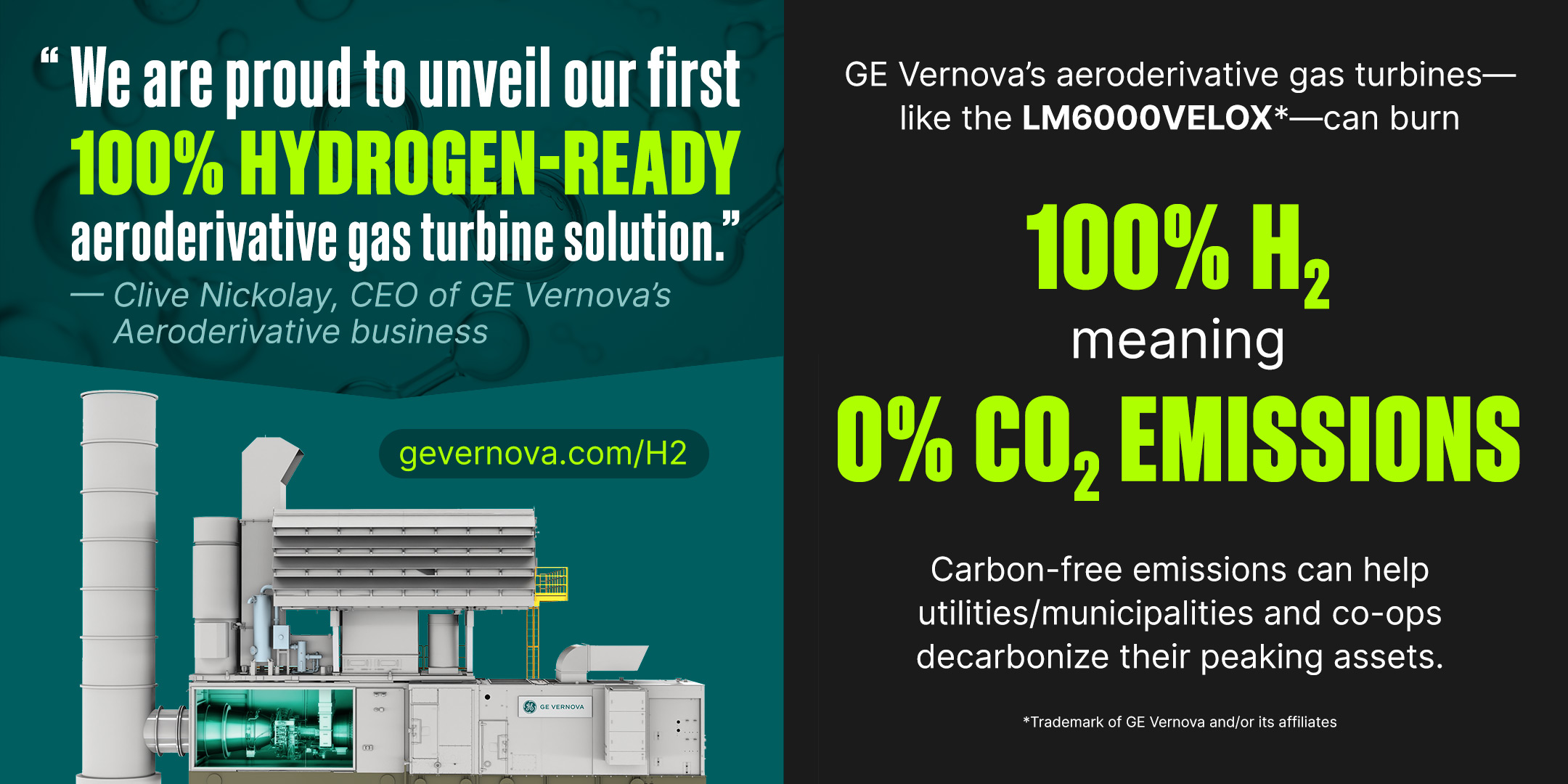Prefer to listen?
Stream our audio version
00:00:00
/
00:00:00
Why aero technology?
The right fit for Munis and Co-ops
With benefits like fast start times, ease of installation, high efficiency, and the ability to decarbonize with fuels like hydrogen, these turbines are a compelling solution for munis and co-ops looking to modernize their energy infrastructure.
Here are some key benefits:
Fast start times and quick installation
Aeroderivative gas turbines are known for their rapid start times, making them ideal for regions that need to respond quickly to fluctuating energy demands. Unlike traditional reciprocating engines, which typically require complex buildings, foundations etc increasing installation time, aeroderivative turbines are small, modular, and can be installed and commissioned in as little as three months. This quick deployment capability is crucial for Munis and Co-ops that need to bring new power sources online rapidly.
In addition, these turbines require less land and have a smaller environmental footprint than their reciprocating engine counterparts. Their compact, modular design means they can be installed outdoors with minimal foundation requirements, making them versatile and adaptable to various site conditions.
One customer example that illustrates fast start times is Taiwan Power Company (TPC)’s Tung Hsiao Power Plant in Miaoli County, Taiwan, which has safely and successfully performed grid-connected trial runs using six GE Vernova LM2500XPRESS aeroderivative gas turbines to help enhance electricity production, improve reliability to manage energy shortages, stabilize the grid, and support growth of renewable energy in Taiwan.

Hydrogen capabilities for a greener future
As the energy sector increasingly focuses on decarbonization, the ability to burn hydrogen is a significant advantage. GE Vernova's aeroderivative gas turbines, such as the LM6000VELOX, are capable of burning up to 100% hydrogen. This means zero carbon emissions from the fuel source, offering a viable path for Munis and Co-ops to reduce their carbon footprint and align with sustainability goals.
By integrating hydrogen capabilities, these turbines not only support cleaner energy production, but also help municipalities and cooperatives future-proof their energy assets as the world moves towards a hydrogen economy.

High efficiency
Aeroderivative gas turbines are also known for their high efficiency, particularly in simple cycle operations. GE Vernova’s aeroderivative gas turbines can achieve more than 40% simple cycle efficiency, significantly reducing CO2 emissions compared to older, less efficient gas turbines that may operate at efficiencies of 20% or less.
This high efficiency is largely due to the turbines' aviation heritage, which has driven continuous improvements in performance and fuel economy. Efficiency can be further enhanced by using technologies like evaporative coolers or inlet air chillers, depending on the ambient conditions.
For even greater efficiency, these turbines can be integrated into cogeneration (cogen) or combined cycle systems, where they can contribute to even more substantial energy savings and emissions reductions.
Quick response to grid demands
In addition to their efficiency, aeroderivative gas turbines are equipped with features that allow them to respond quickly to grid frequency fluctuations. This fast response capability helps stabilize the grid, making these turbines a reliable option for municipalities and cooperatives that need to maintain consistent power supply despite varying demand.
The power turbine and high-pressure shaft of GE Vernova’s aeroderivative gas turbines work together to provide this quick response, outperforming reciprocating engines in terms of reliability and grid stability.
One good customer example is Colorado Springs Utilities, which is using six LM2500XPRESS power generators to help convert its coal-fired Martin Drake Power Plant to gas power.
Versatility across industries
Beyond their applications in power generation, aeroderivative gas turbines are also well-suited for cogeneration applications, where they provide both heat and power to industrial users. With decades of proven performance, these turbines offer the flexibility to operate in cogen mode or quickly transition to peaking mode, depending on the grid’s needs.
This flexibility is especially valuable for industrial customers in North America and Europe, where there is a growing demand for efficient, reliable energy that can support diverse operational needs.
Closing thoughts
For municipalities and cooperatives, the benefits of aeroderivative gas turbines are clear. From rapid deployment and high efficiency to hydrogen compatibility and quick grid response, these turbines offer a versatile and sustainable solution for meeting modern energy challenges. As Munis and Co-ops continue to play a critical role in the energy transition, adopting aeroderivative gas turbines can help them achieve their goals more effectively and efficiently.

Olamide Ogunduyile
Technical Sales Executive, Aeroderivative Gas Turbines, GE Vernova
Olamide has 18 years of power plant, industrial controls, product development, engineering management and sales development experience. As a Global Sales Executive for GE Vernova’s Aeroderivative Gas Turbines business, he is responsible for leading a team of technical sales specialists responsible for growing order intake globally. Olamide received his B.Sc. degree in Electrical Engineering from Drexel University and an MBA degree from Fisher College of Business at The Ohio State University.
Additional resources
Explore how aeroderivative gas turbines are making a difference with our industrial customers in North America and Europe.
Contact us
